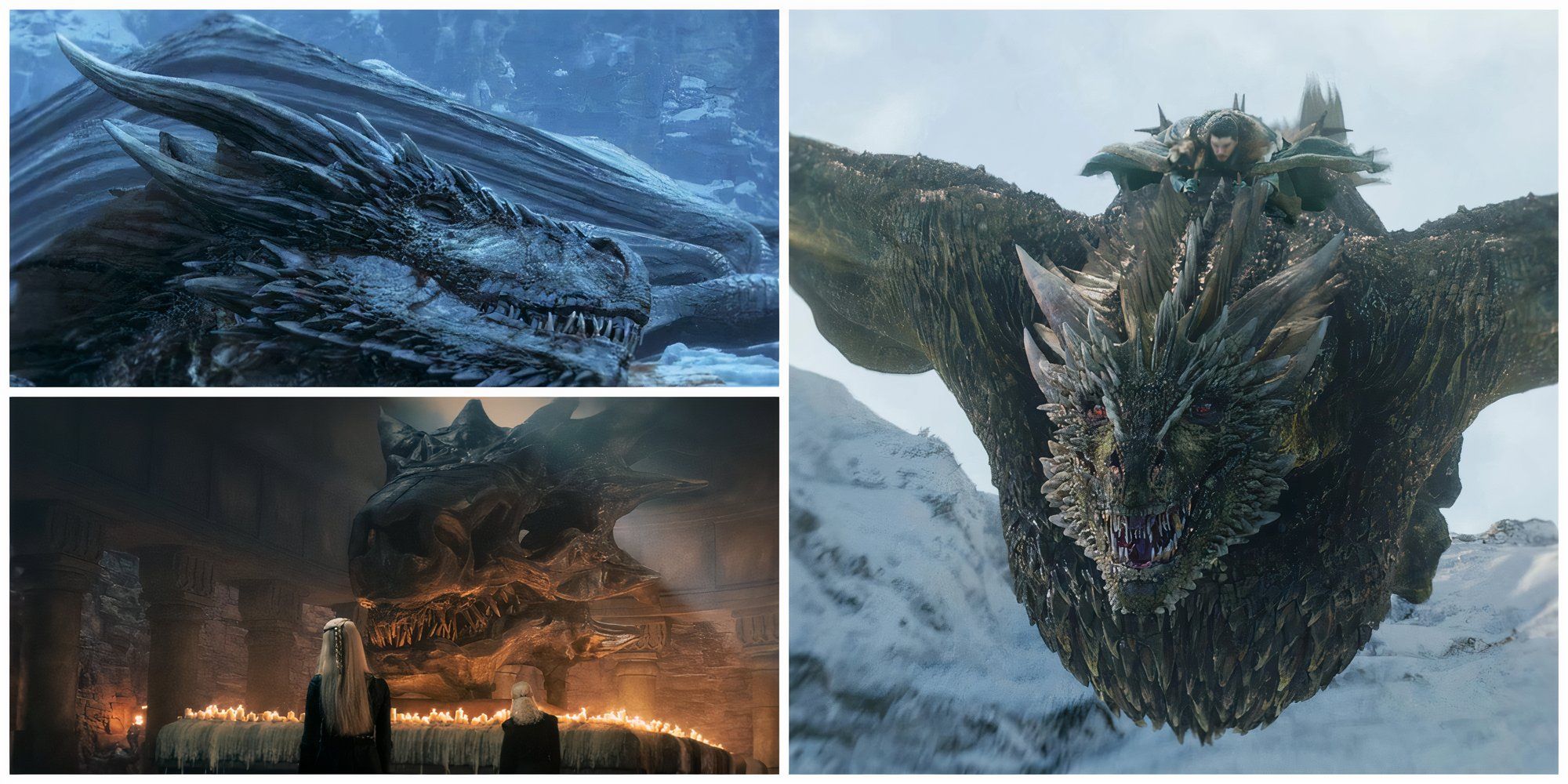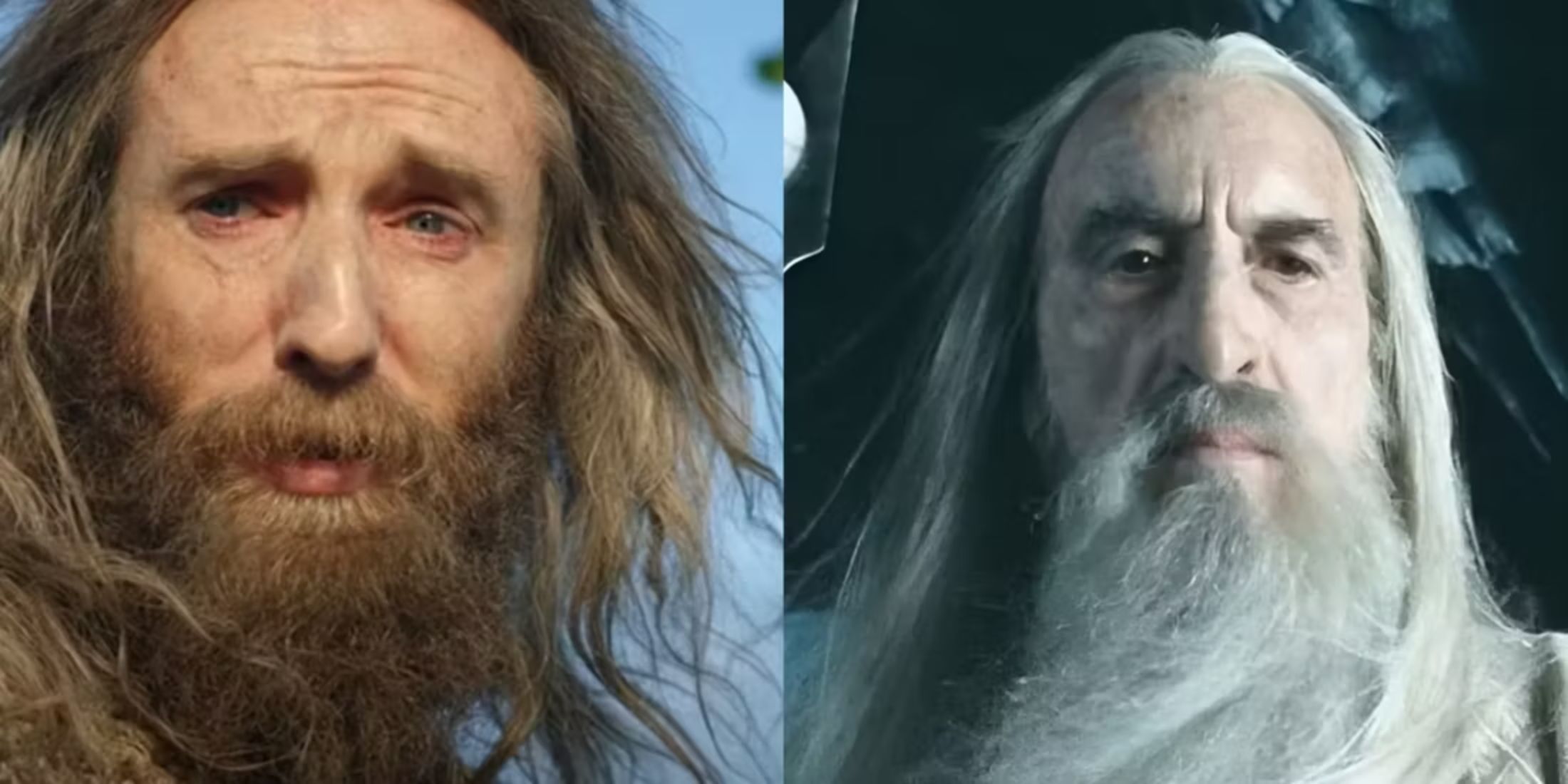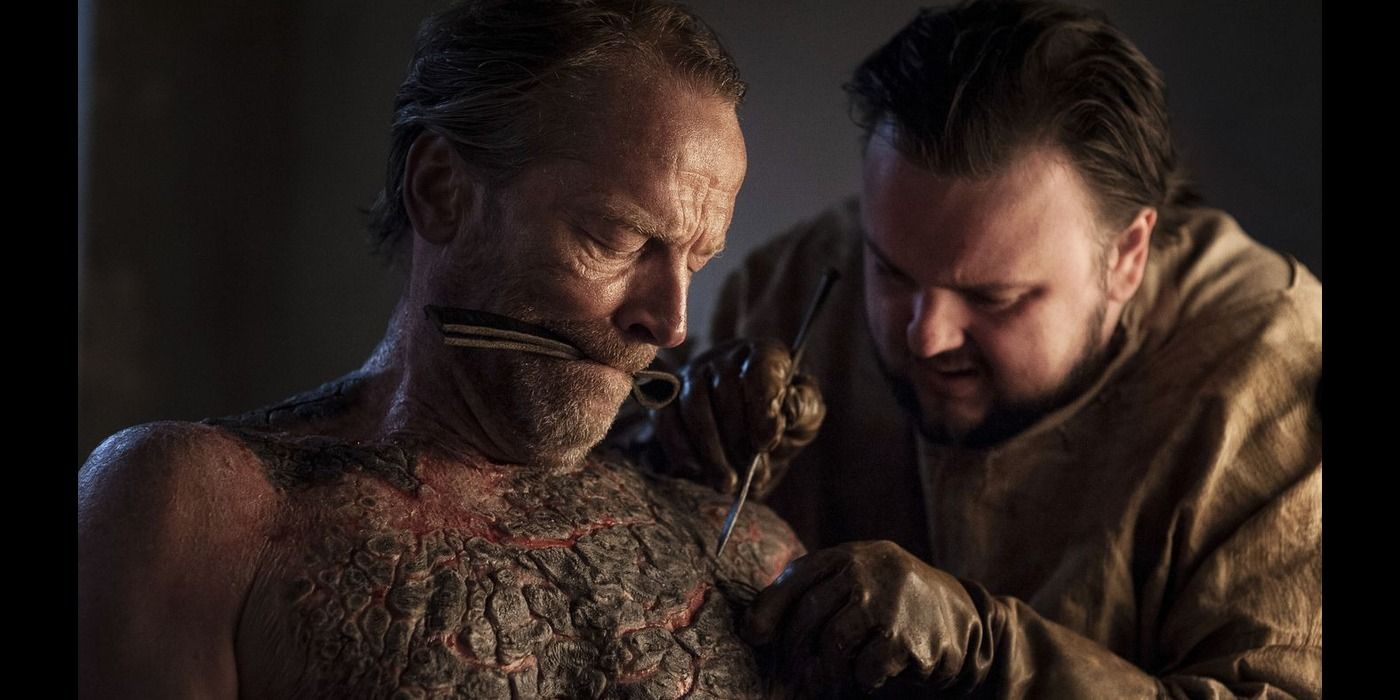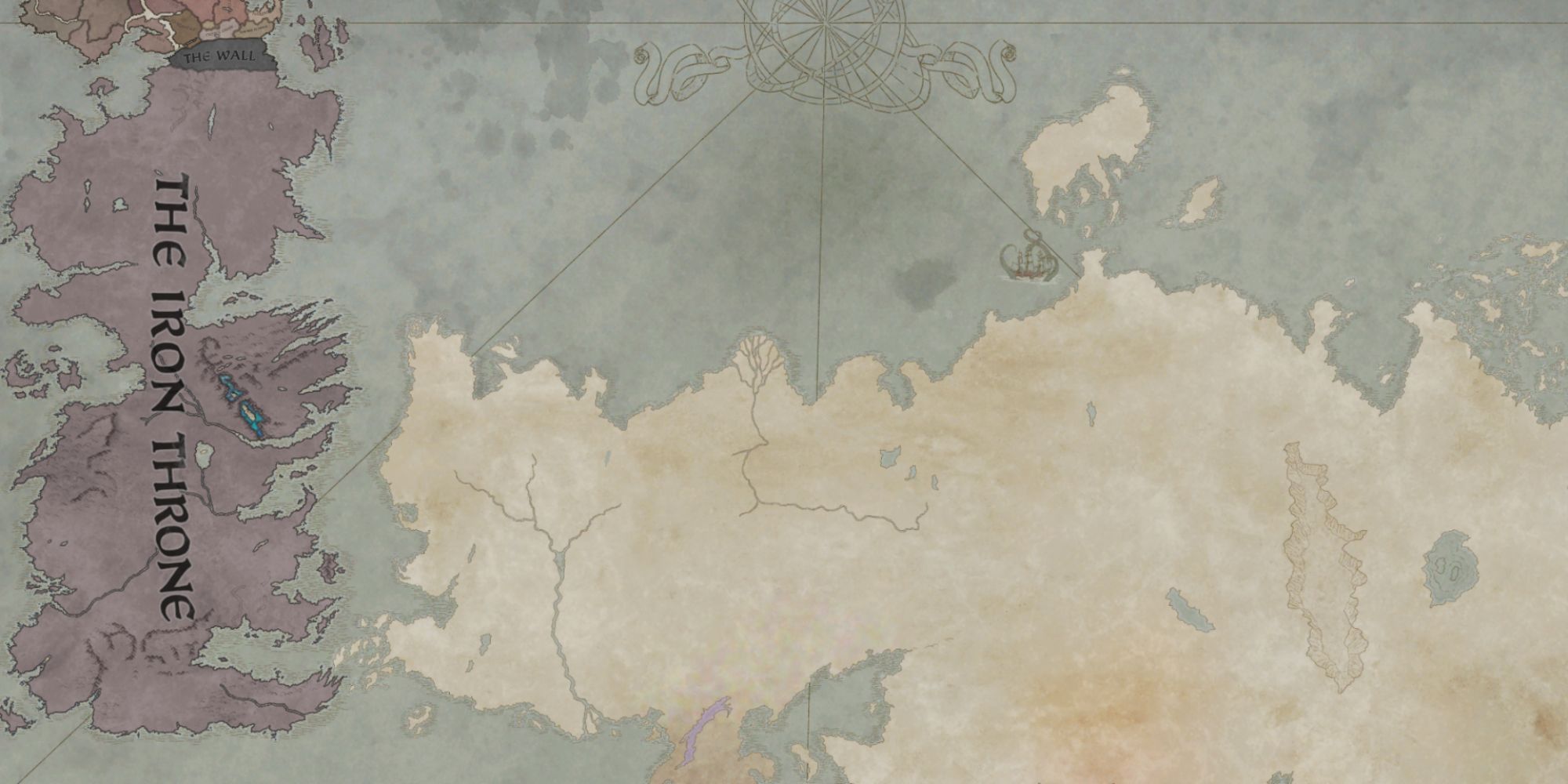The many continents of George R.R. Martin's A Song of Ice and Fire are fraught will peril of every kind. Pirates, rogue warlords, mad kings, dangerous ancient dark magic, and equally dangerous diseases. While for the most part the citizens of the Known World, the only name Martin gives for his world, suffer the same kinds of influenzas and common disorders as those of the real world, there are a few, terrifying exceptions. One of which is the mysterious greyscale disease that plagues the continent of Sothoryos and some of the more abandoned places in Essos.
Though greyscale infections are relatively rare in Westeros, where most of the series' action takes places, it is perhaps the most feared malady of all. The disease has woven in and out of Westerosi history, laying low commoners and kings alike. But what is this strange affliction, how does it work, and is there a cure?
What is Greyscale in Game of Thrones?
Greyscale is a highly contagious, often fatal disease that infects the skin in a single spot and then spreads to cover the entire body in stiff, mottled black and gray stone-like lesions until the infected resembles a human gargoyle. There are two known forms of the disease - one that primarily affects children and is survivable and another that is certain to cause swift death in adults.
Children who are infected remain disfigured for life, swathes of their skin covered in dead, rock-like flesh that, though no longer contagious, often comes with a lifetime of persecution. In many cultures, such as that of the wildlings or "free folk," child survivors of greyscale are considered unclean and are euthanized when discovered to prevent the chance of a later outbreak. This makes childhood greyscale a needless death sentence as survival in childhood not only means the affected person is no longer contagious, but also, they are immune to the fatal, epidemic-like strain that kills adults. In this way, the disease operates a bit like real world chickenpox. A famous example of childhood greyscale is Shireen Baratheon, daughter and only child of Lord Stannis Baratheon and niece of King Robert. Though her face was marked with the disease for all the days of her all-too-short life, she posed no risk to anyone.
While childhood greyscale seems to begin anywhere on the body, the documented cases of the fatal form typically begin in a distant extremity like the fingertips or toes. The infection is said to be painless, and often the only noticeable sign of infection is a blackened fingertip or inexplicable numbness. Those who suspect they've been exposed to greyscale use this to assess their status, pricking their fingers and toes every day with a knife to check for infection. As long as they feel pain, they know they are safe, but should the day come when they can't feel the blade, they know death is sure to follow.
From the initial point of infection, the disease creeps upward along the arm or legs, slowly corrupting the tissue in its path. The numbness spreads as does the grey, cracked, stone-like appearance. Blindness often ensues once the sickness covers the face. Some patients die at this point, unable to breathe when the tongue and lips turn to "stone." If the patient survives this and makes it into the late stage, death comes swiftly as the disease turns inward, consuming the muscles, bones, and inner organs. But without fail, shortly before death, every greyscale patient goes mad and will attack anyone nearby if left unrestrained. It is in this way that the disease spreads like a zombie infection.
The Maesters of Westeros have been known to slow the infection with treatments of lime, mustard poultices, and scalding hot baths. Many commoners, unable to afford the help of maesters, are known to amputate infected appendages in hopes of stopping the spread. While this drastic approach has been known to work on occasion, there is no guarantee. The only surefire way to stop an infection in adults is to kill the host.
In Essos, across the Narrow Sea, there is an entire region given over to victims of greyscale. The Sorrows, as the area is called, is an abandoned, supposedly cursed, fog-covered land that has stood in ruins since the fall of the ancient Valyrians. None but pirates seeking secret channels to smuggle their wares in and out of Essos, and the mysterious, late-stage greyscale patients known as the Stone Men dwell there.
The stone men often gather on The Bridge of Dream, which stretches over the Rhoyne River. The poor, mad creatures seem to hibernate on the ruined bridge like gargoyles, only activating when fresh hosts for the virus pass nearby. Once activated, the Stone Men attack on sight, overcome with an irresistible instinct to maim or kill the uninfected persons. But legend has it that there is more to the stone men than meets the eye. Old tales speak of a "Shrouded Lord," an infected man who leads the others, turning the morose collection of the discarded into an actual nation. What his aims are and whether he is truly one man or many, all sharing the title over the years, is unknown.
Who Was Able to Survive Greyscale?
In the series, Game of Thrones, Tyrion Lannister and Jorah Mormont survived a Stone Men attack when they passed through the Sorrows on their way to join up with Danaerys Targaryen. As a result of his infection, Jorah was forced to flee his queen's service and seek treatment from the Maesters in Oldtown.
At the same time, Samwell Tarly was in the city studying to become a maester for the Night's Watch. He encountered Ser Jorah and, having finally grown disillusioned with his lackluster training, and confident in his own abilities promised to heal the dying knight. The procedure Sam used was originally discovered by the Maesters generations ago but was forbidden as it was deemed to dangerous, just as likely to kill the doctor as the patient. It involved cutting the greyscale tissue off of the patient with a scalpel and the immediately treating the raw flesh with special ointments.
Sam expresses his intention to heal the knight but was ordered not to at penalty of dismissal. Nevertheless, driven by a desire to end Jorah's suffering and, perhaps, to prove his own worth, Sam defies orders and successfully cures the man. Despite perform the first ever recorded successful greyscale procedure, Sam is again relegated to meager duties and the technique remains banned. All of this serves to inspire Sam to quit and return to the Night's Watch, several stolen tomes about Others and the Night's King in tow.






